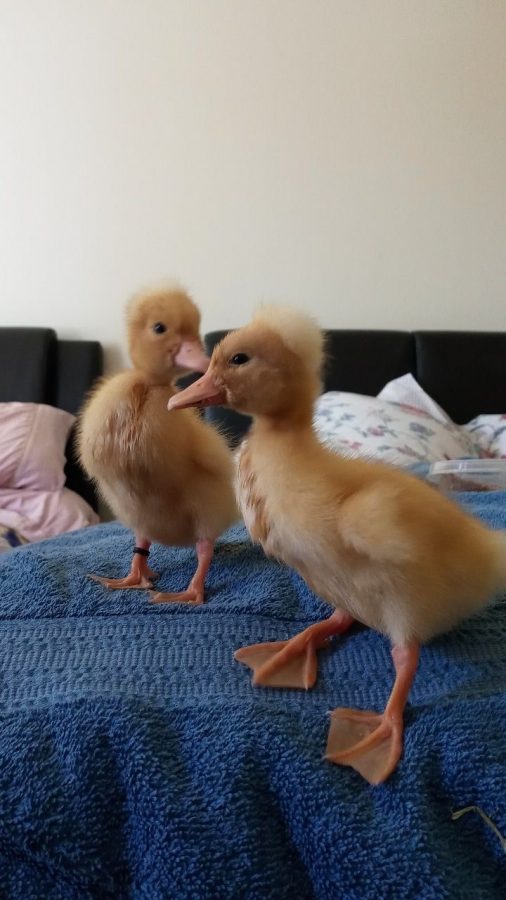How to care for a duck
Ducks can be great pets, but make sure you are setting yourself, and your ducks, up for success.
Whether it is raising a duckling from the start or finding a lost one in the street, here are some ways to help care for a duck. No matter the age of a duck, they are very loveable and can get very attached to whomever they think their parent is.
1) Set up a living space for your new pet: When finding or buying a duck the first thing you should do is go buy them a bin which you should be able to buy at any Target, Walmart, HomeDepot, etc. The bin should be deep enough to hold the duck safely in case you have other animals, such as dogs or cats that may want to get a little too curious and up close with the fragile duckling. When there, you should also try and find either a duo of a duckling or chick feeder for water and seeds this is best. If you cannot find something like that, I recommend a dog or cat water feeder that refills over time so you can clean it quickly and makes it quite efficient. For a substitute for the feeder, you can get Tupperware and remove the lid and that will also work perfectly.
2) Duck-specific supplies: Once you have the bin and feeders you should be able to go to almost any Petco or pet supply store to pick up some bedding it should be preferably straw bedding or pine shavings. This is optional but you can also put dog pee pads underneath the bedding to help with making the clean-up process easier. The last thing you will want to buy is a heat lamp that is preferably 60-100 watts to keep them warm for the first few weeks as they might need it if the temperature around you tends to drop, and don´t forget to buy a fixture.
3) Get food for your duck: While at the supply store, you will also want to pick up some duckling feed or mush. If the supply store doesn’t carry any you can also look for a non-Medicated chicken starter. It will substitute perfectly but make sure it is non-medicated.
4) Assembling the living space: After you have your supplies, begin the setup process. First, you want to find a safe area for the ducklings. For some, a garage will work, but if you do not have a garage, find an out-of-the-way spot in any room. You will want to first lay down the bedding (or dog pee pad), then place the heat lamp around a foot or so away from the duckling. Next, add the food and water to the opposite side of the heat lamp, so the food does not warm up. Also, the multiple temps will allow the duckling to warm up and cool down as necessary. After the bedding, the lamp, and the food, you should be done. The one thing with the light fixture you have to remember is every week move it a few inches away from the duckling as they grow and rely on it less.
5) Add water! After the duckling is a week old, no matter the breed, you should be able to place him or her in water. Ducklings love water, so it would be best to try and get them in water as often as possible. Keep a close monitor on them as it is possible for them to drown if they get tired or cannot touch the bottom of the tub you are using. Also, get your duck out of the water enough time to dry off completely before bedtime.
6) Imprinting: Something to note: ducklings can imprint on a human and will want to follow you everywhere. This is not a bad thing! You will have an attached pet. However, make sure you are visible to the duck at night to avoid distress in your new pet.
7) Final steps: How big will your fully grown duck get? Ducks will reach full size as quickly as six to eight weeks, which does mean they will need a bigger living area. Ducks can get up to 28 inches long, depending on the breed. Fully feathered ducks will have their own warmth and will not rely on the heat lamp. You can either buy or build an area for the ducks. Keep in mind they need an area at least three-feet tall by four-feet for mobility. These living quarters should be used mainly at night because the duck will need and want to move about during the day.
One thing, in my opinion, that should not be done is cutting the duck’s feathers. For reference, some duck owners choose to do this to limit the duck’s flight. Truthfully, it is cruel. Ducks deserve to fly!

